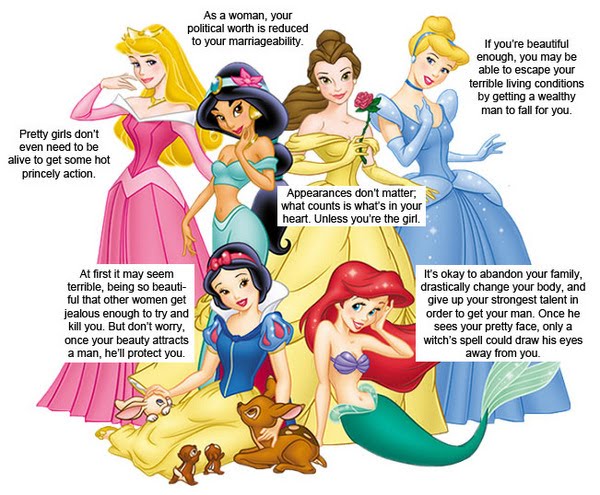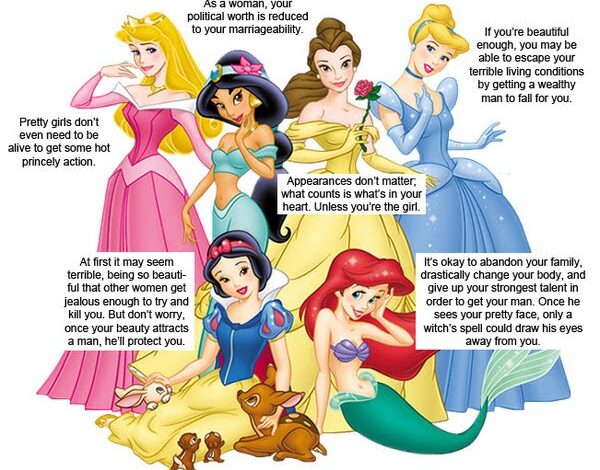Breaking the glass slipper: How patriarchy shaped female characters in Disney. By Geilee Skandakuma.
Geilee wrote this article after attending an ASAP Youth Advocacy Institute held recently and shared with us how the YAI pushed her to think about this issue in depth.

As a young girl, Disney princess movies were a magical escape. I was captivated by their fairy-tale worlds, where beauty reigned supreme and love conquered all. These princesses, with their perfect faces and enchanting lives, were my childhood idols. But as I grew older and more aware, my perception of these characters and their stories began to change. The magic started to fade, replaced by a deeper understanding of the underlying messages these films perpetuated about women and their roles in society.
The Beginnings of Disney Princesses
Disney’s first princess, Snow White, appeared in 1937, and her story quickly became iconic. Snow White is kind, beautiful, and obedient. Her main adversary, the Evil Queen, is envious of her beauty and youth. This jealousy drives the Queen to poison Snow White, who can only be awakened by a prince’s kiss. As a child, I never questioned why Snow White needed a man to save her. But now, I wonder why she couldn’t save herself. This narrative of a helpless woman needing a man’s rescue sets a troubling precedent.
Snow White’s story is not unique. In Cinderella, the titular character is mistreated by her stepmother and stepsisters. Her transformation from rags to riches is only possible through the intervention of a fairy godmother and her eventual marriage to a prince. Again, the message is clear: a woman’s worth and happiness depend on a man’s validation and rescue.
In Sleeping Beauty, Princess Aurora falls into a deep sleep after pricking her finger on a cursed spinning wheel. She remains unconscious until a prince kisses her, breaking the spell. This scene, normalized as a romantic gesture, disregards the concept of consent. Aurora, much like Snow White, is kissed while unconscious, unable to give her consent. These stories subtly teach that a woman’s autonomy over her body is secondary to the actions of a man, a deeply problematic message that perpetuates harmful norms around consent and bodily autonomy.
The Cost of Love and Identity
In The Little Mermaid, Ariel’s longing to become human stems from her love for Prince Eric. To be with him, she sacrifices her voice—an essential part of her identity. This sacrifice reinforces the idea that women must give up parts of themselves to be loved and accepted. Ariel’s story is particularly concerning because it suggests that a woman’s voice, her means of expressing herself, is less important than her ability to attract a man.
This theme of women sacrificing for love continues in many Disney films. Belle in Beauty and the Beast trades her freedom for her father’s safety and ultimately falls in love with her captor. While the film portrays Belle as intelligent and independent, her story still revolves around a man. Her happiness and transformation are tied to the Beast’s change, implying that love can reform even the most toxic relationships.

Villains: The Other Side of the Patriarchy
Disney’s portrayal of female villains is another aspect worth examining. These characters, often powerful and independent, are depicted as evil. The Evil Queen in Snow White, Ursula in The Little Mermaid, and Maleficent in Sleeping Beauty all possess traits that threaten the patriarchal order. They are ambitious, assertive, and refuse to conform to traditional female roles.
The physical appearances of these villains are also telling. They often have exaggerated features that deviate from conventional beauty standards. Ursula is overweight and flamboyant, while the Evil Queen transforms into an old hag. These portrayals suggest that women who do not fit into the narrow mold of beauty and subservience are to be feared and vilified. The underlying message is clear: powerful, non-conforming women are dangerous and must be defeated.
Moreover, these villainous women often operate outside societal norms. Ursula is an independent sea witch who seeks power, challenging the male-dominated kingdom of Triton. The Evil Queen’s obsession with beauty and power goes beyond her role as a ruler, making her a threat to the established order. Maleficent, spurned by societal rejection, retaliates by cursing Aurora, an act that positions her as an enemy of the patriarchal kingdom.
These narratives reinforce the idea that women who defy societal expectations, who seek power or live independently, are inherently evil. It’s a troubling message that punishes women for stepping out of traditional roles, suggesting that ambition and autonomy in women are undesirable traits.
Shifts in the Narrative
The 1990s brought some changes to Disney’s portrayal of princesses. Mulan and Pocahontas featured more independent heroines who take control of their destinies. Mulan disguises herself as a man to fight in the army, challenging traditional gender roles. Pocahontas defies her father and societal expectations to pursue peace and love on her terms. However, even these stories are not free from patriarchal influences. Mulan’s success is still validated through male approval, and Pocahontas’s narrative is intertwined with her romantic relationship with John Smith.
From a feminist perspective, these stories highlight the subtle ways patriarchy influences narratives. While Mulan and Pocahontas exhibit independence and strength, their journeys are still framed within male-centric validation and romantic subplots. This demonstrates how deeply entrenched patriarchal norms are, subtly shaping and limiting the scope of female autonomy even in ostensibly progressive narratives.
A significant shift occurred with the release of Frozen in 2013. For the first time, Disney presented a story where the central relationship was between two sisters, Anna and Elsa. Hans, the seemingly perfect prince, is revealed to be the antagonist, a refreshing twist that subverts the typical fairy-tale romance. This subversion is a critical step toward dismantling patriarchal narratives, showing that women’s stories can be rich and complex without relying on romantic validation. However, the film also suggests that men can be deceptive and untrustworthy, reinforcing a different kind of caution around male characters.
Modern Princesses and the Quest for Autonomy
Recent Disney films have made strides in presenting more nuanced female characters. Moana and Raya and the Last Dragon feature heroines whose stories are not centered around romantic relationships. Moana’s journey is about self-discovery and saving her people, while Raya’s quest is about trust and unity. These characters are strong, independent, and capable of solving their problems without relying on male saviors.
Despite these advancements, the legacy of patriarchal storytelling in Disney princess movies is hard to ignore. The older narratives have left an indelible mark on generations of children, shaping their views on gender roles and relationships. The idea that a woman’s worth is tied to her beauty and her ability to attract and please a man has been a pervasive theme. This indoctrination has subtly influenced societal norms, perpetuating the belief that women’s primary value lies in their appearance and their capacity to be desired by men.
From a feminist perspective, these narratives highlight the need for more stories that celebrate female autonomy and strength without the shadow of patriarchal validation. By challenging these deeply ingrained stereotypes, we can begin to reshape societal norms and foster a culture that values women for their intellect, capabilities, and inherent worth.
Towards a new narrative
Breaking the glass slipper means more than just reimagining fairy tales; it means deconstructing the patriarchal narratives that have shaped our understanding of gender roles for decades. By continuing to push for more complex and autonomous female characters, we can create stories that inspire and empower without reinforcing outdated and harmful stereotypes. It is up to us, as consumers and creators, to demand and support narratives that celebrate women’s strength, independence, and diversity.
As we move forward, let’s ensure that the next generation of children grows up with stories that reflect true equality and respect for all genders. It’s time to let go of the old tales and embrace a future where every child can see themselves as the hero of their own story.
Geilee Skandakumar, from Sri Lanka is the newest ASAP Youth Champion!. She is a feminist and the founder of the Gender Justice Collective, advocates for Sexual and Reproductive Health and Rights (SRHR), human rights, gender equality, and women’s rights. With a practical approach, she actively works to empower women and promote equality, embodying activism and advocacy in her pursuits.






